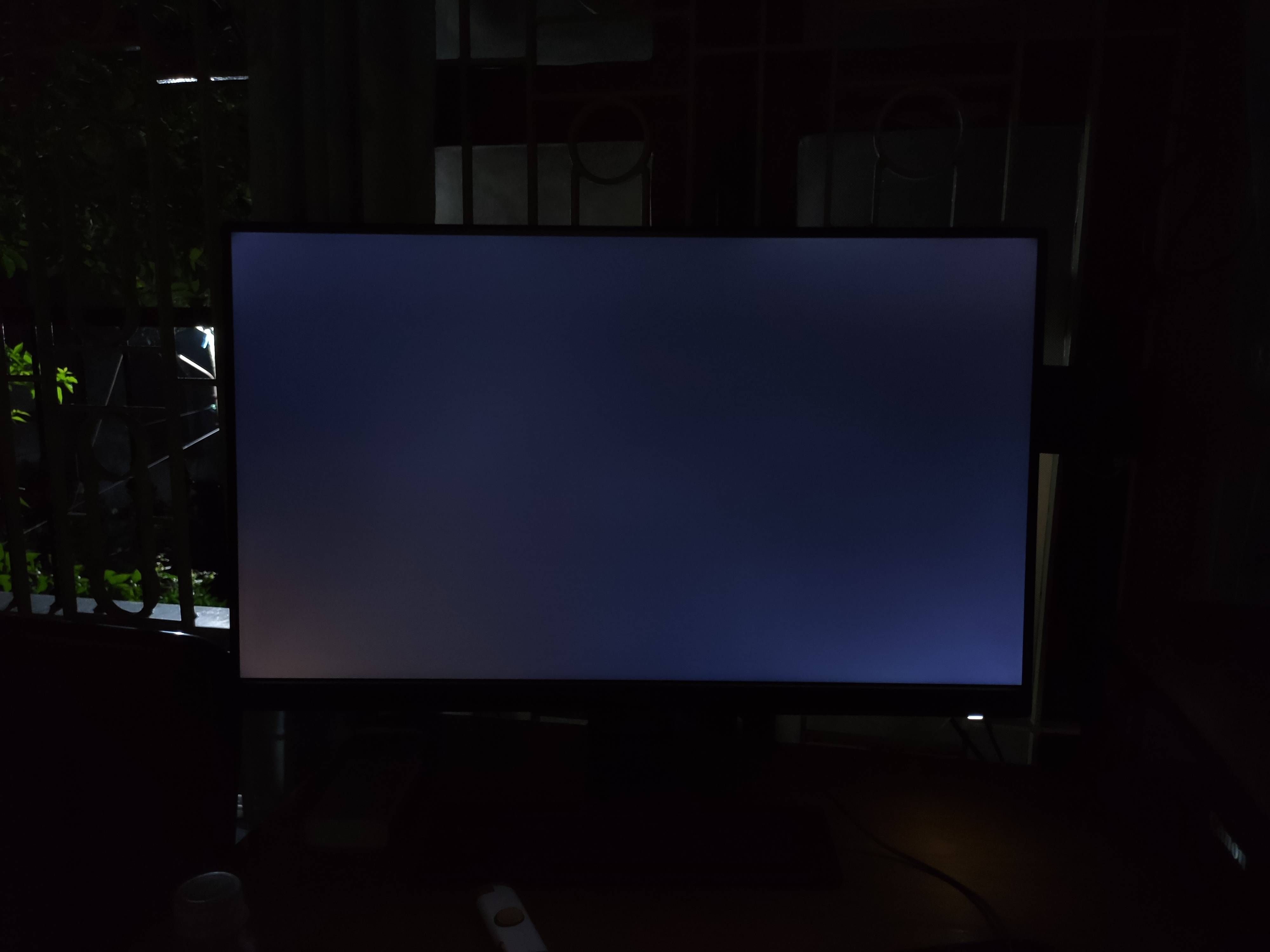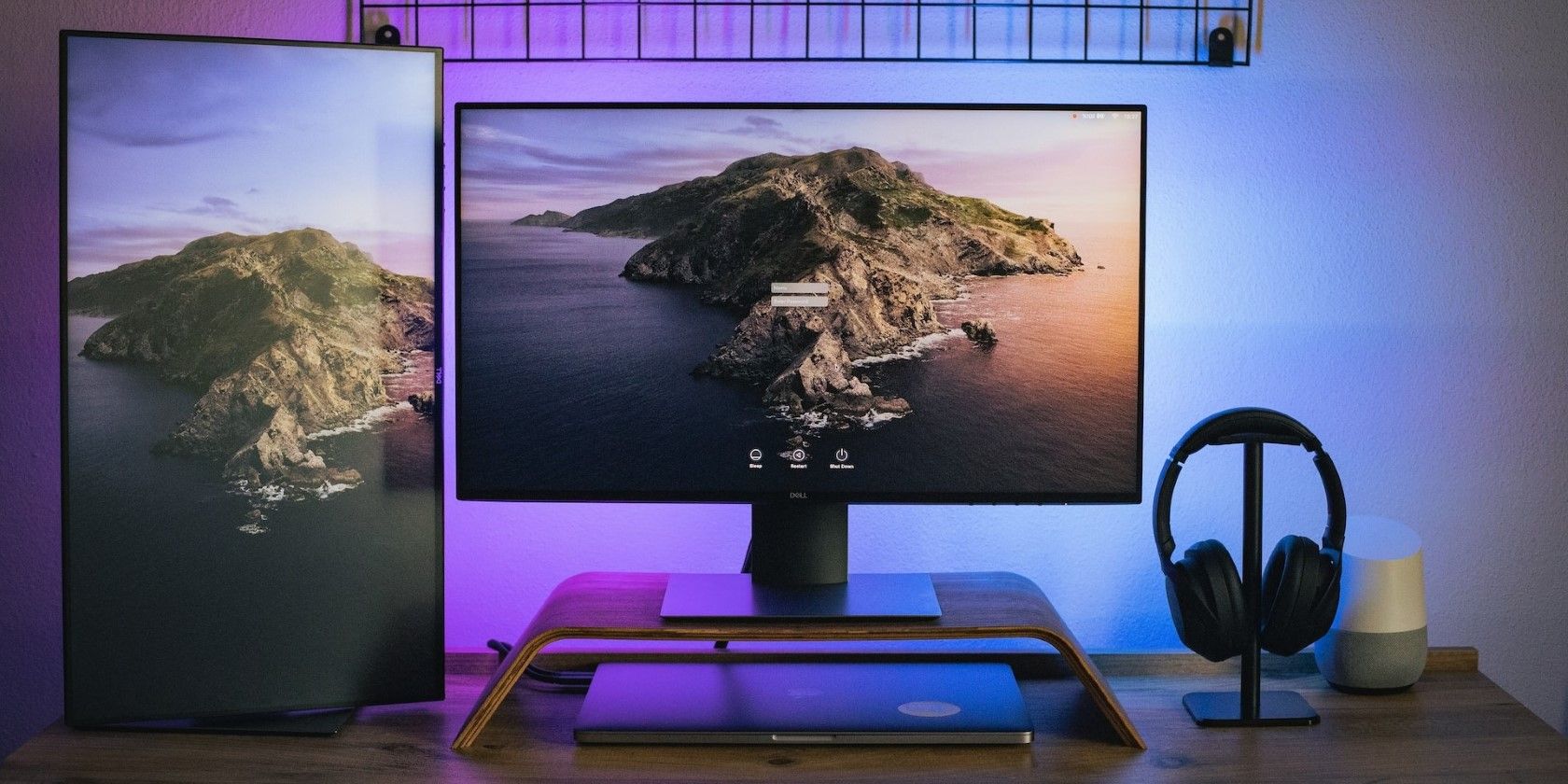There are many types of monitors with many different types of screens, but many of them use IPS LCD screens. They get the job done, and unless you’re going out of your way to get something like an OLED screen, there’s no need to reinvent the wheel. This is especially true of cheaper monitors.
But a common theme with cheaper monitors is the type of screen they use and other issues with the panels themselves and their quality. A frequent issue is IPS glow. But what is it exactly, and how do you fix it?
What Is IPS Glow?
Have you ever noticed that when your computer monitor displays a black or really dark screen, there is a sort of glow coming out of the four corners of your display? Chances are that your issue here is, precisely, IPS glow.
The term IPS glow refers to the appearance of a faint, usually bluish or yellowish glow that can be seen on the corners or edges of an IPS LCD panel when viewing dark or black content in low-light conditions. This glow is most noticeable when you’re looking at the screen from an angle rather than directly facing it, although in some cases (especially really bad ones), it can be seen when looking at it directly.
It’s important to know that IPS glow isn’t the same thing as backlight bleeding, which is another issue that can affect IPS displays. The terms can overlap, but they’re not the same thing.
IPS glow isn’t technically considered a defect in the same way backlight bleeding is—backlight bleeding looks much worse and isn’t usually limited to the corners. Backlight bleeding is caused by light leaking from the edges of the screen, usually due to uneven pressure or improper assembly. In contrast, IPS glow is an issue with the actual IPS panel and an expected drawback for the advantages IPS LCD panels provide.
What Causes IPS Glow?
The thing with IPS glow is that it’s not really a defect but rather something considered, to a degree, normal in IPS panels. IPS glow can vary from one screen to the next, and it can even vary with multiple monitors using the same display model. It’s an inherent issue in the liquid crystal structure that allows for the display technology’s many advantages, such as better color reproduction and wider viewing angles.
Most of the time, IPS glow shouldn’t be noticeable unless you’re looking for it. If you turn off your lights and put on a dark screen on your monitor, you might just be able to spot it. But in regular day-to-day situations, chances are that you won’t see it at all. Then again, some displays might have it worse than others. There’s no real reason for this, though. It all comes down to panel variance—even if a manufacturer makes multiple batches of the same display panel, they will not all be 100% the same (known as the monitor and TV lottery). One of the many things that can vary is IPS glow and how bad it is.
There are measures display makers can take to curb IPS glow. ATW polarizers are one of them. But to a certain degree, all IPS monitors suffer from this evil. And while it’s not really something “fixable,” there are things you can do for it to look less bad.
5 Ways to Mitigate IPS Glow
There’s not really a way to completely fix IPS glow. As it’s an issue that comes up during manufacturing, it’s not something that can be “fixed” how you can fix other issues, such as backlight bleeding. However, there are steps you can take to mitigate IPS glow and make it bother you less.
1. Adjust Your Viewing Angle
As we mentioned above, IPS glow can be noticed most when viewing the screen from an angle, so if you’re doing this rather than looking at it directly, adjusting your viewing position can help reduce its impact. You can try positioning yourself directly in front of the monitor, as close to its center as possible. This will minimize the oblique angle through which the IPS glow is most pronounced and hopefully help you in making that IPS glow way less noticeable.
2. Tweak Your Screen Brightness, Gamma, and Contrast
Another thing that can worsen the effect of IPS glow, or how noticeable it is, is your screen’s actual settings. If your screen is brighter, that glow will clearly be more noticeable. Adjusting your monitor’s brightness, gamma, and contrast settings can help manage IPS glow, and lowering the brightness slightly can reduce the overall light output—potentially making that glow less apparent. Experiment with gamma and contrast settings to find a balance that suits your preferences while minimizing the glow’s visibility.
3. Change/Improve Your Ambient Lighting
IPS glow is also more apparent if you happen to be looking at your screen in a dark environment—a room with the lights turned off or with really dim lights, for one. The presence of some ambient lighting in your room can help mitigate the perception of IPS glow. A well-distributed, dim light source behind or around your monitor can reduce the contrast between the screen’s dark areas and the surrounding environment, so it’s something that you could consider if you’re looking into mitigating the effect. This can make the glow less noticeable and create a more comfortable viewing experience.
4. Calibrate Your Monitor
One thing you can try is calibrating your monitor. Monitor calibration involves adjusting various settings to ensure accurate color representation and optimal visual quality. While it won’t eliminate IPS glow entirely, proper calibration can help create a more balanced image that minimizes the perceived impact of the glow. There are many tools for calibration that you can use for this purpose.
5. Use Bias Lighting
Finally, we’re returning to the lighting issue, but with a slightly different solution: bias lighting. This involves placing a soft, low-intensity light source behind your monitor. This gentle illumination reduces the contrast between the screen and the surrounding area, making the glow less noticeable. Bias lighting is particularly effective when it’s close in color temperature to the content you’re viewing on the screen. And if you don’t want to turn on your room’s lights, this could be your next best option.
You can make your own bias lighting without spending a fortune, which is handy.
Unfixable, But Not Hopeless
You can’t really fix IPS glow, but you can take steps to make it less noticeable. None of the methods we mentioned here will completely eliminate IPS glow. Instead, these strategies aim to minimize its impact and provide a more comfortable viewing experience, especially when working with dark or black content in low-light conditions. Experiment with these techniques to find the combination that works best for your preferences and the specific characteristics of your monitor.


